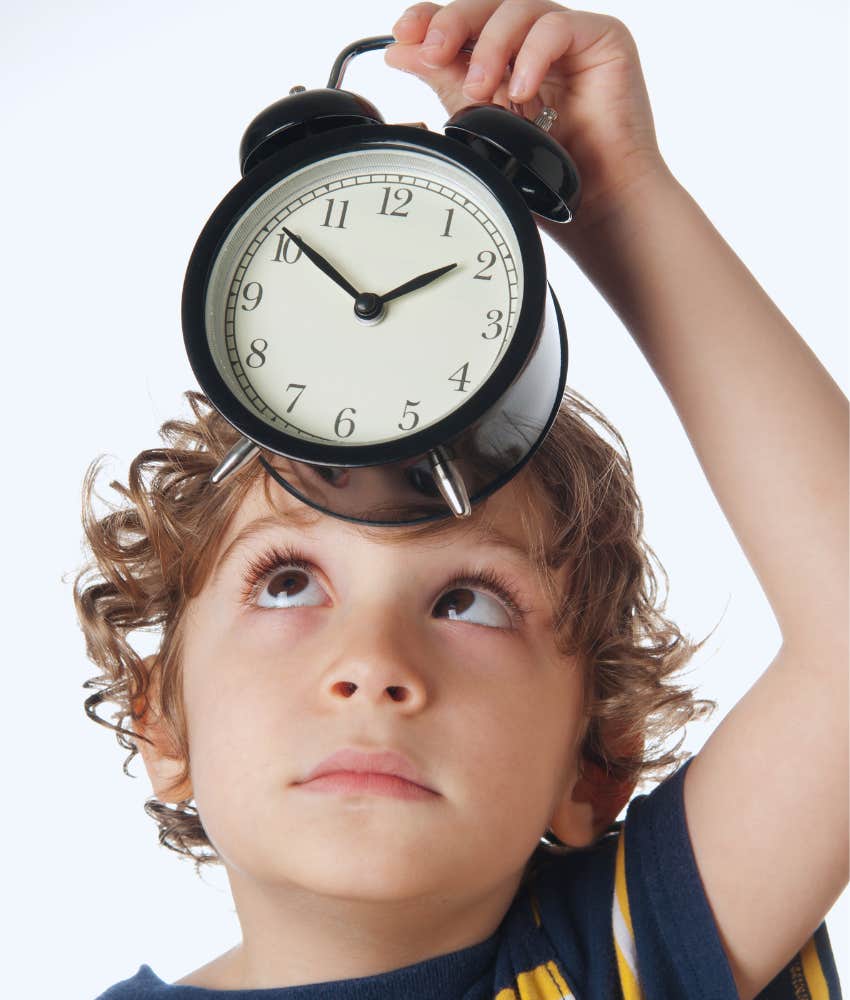Everyone loves to focus on the generational divide. It’s true that each generation has plenty of differences. But, there’s one thing older generations have in common that Gen Z just can’t quite seem to grasp.
We’ve all heard the complaints that kids today can’t read or write in script, and we all laugh when they fumble with old rotary phones, but you probably have yet to think of this tiny piece of common knowledge that younger generations missed out on. Gen Z and younger have all grown up surrounded by technology that has made learning how to read an old-school analog clock completely unnecessary.
A Gen Z man shared that he did not know a key piece of information about an analog clock.
In a TikTok, content creator @yungwalker, known as Walky on the app, shared some surprising information that was apparently obsolete to him.
“I don’t know if anyone else also didn’t know this,” he said, “but the reason people used to say quarter till, like ‘quarter till nine,’ is because there was physically a quarter of the clock left.”
“A quarter of the clock left till nine,” Walky said through laughter, referring to the actual 15-minute chunk of time that makes up a quarter of an hour.
Commenters were not amused by the Gen Z man’s revelation and called him out for not knowing what seemed like a well-known fact.
One person really put the issue into perspective when they revealed the phrase refers to more than just the amount of time left on an analog clock.
“Or it could be that 15 minutes is 1/4 (a quarter) of an hour?” they pointed out. “Regardless of analog or digital, math still exists … “
While Walky seemed to be the only one not aware of this “quarter of an hour” phenomenon, and his video very well could have been satire, it still raises an important question: Just how much does Gen Z know about telling time on an analog clock?
The generation is, quite simply, used to instant gratification in all forms, and time is no different.
You can automatically look at your phone, laptop and often your TV and see the time staring right back at you. No need to look at an analog clock and figure it out.
Do children still learn to tell time on analog clocks in school?
Telling time has long been a cherished part of the school curriculum. But is it even necessary now, given how infrequently analog clocks are used, especially by the very young?
While the answer probably depends on the educator you ask, one confirmed that it is still both part of the curriculum and important.
 jfmdesign | Canva Pro
jfmdesign | Canva Pro
Dana Ramos, principal of Lowell Elementary School in Phoenix, Arizona, told Cronkite News, “I think it’s still a skill that students have to have because they still may run into an analog clock somewhere, and it’s important for them to be able to have that skill even if they don’t utilize it every single day.”
However, Ramos also acknowledged that reading an analog clock might be a dying art, as doing so needs “consistent application” to really stick in one’s head.
And, with how things are going, there just aren’t opportunities for that application.
There are still chances to use your time-telling skills in the real world.
A lot of people would assume that without being presented with an analog clock, such as in a classroom setting, reading one would be completely unnecessary. Expert Leslie Josel said that’s not true.
Josel is the founder of Order Out of Chaos, a time management coaching firm, and the creator of a student planner.
She agreed with Ramos and the importance of knowing the skill, telling Cronkite News, “The only way that you can ever learn to manage time is you have to be able to see it.” According to Josel, telling time properly is essential to productivity, and really just life in general.
So, while it might be easy to say that analog clocks are a thing of the past, for many, they are still very, very relevant.
Mary-Faith Martinez is a writer with a bachelor’s degree in English and Journalism who covers news, psychology, lifestyle, and human interest topics.

